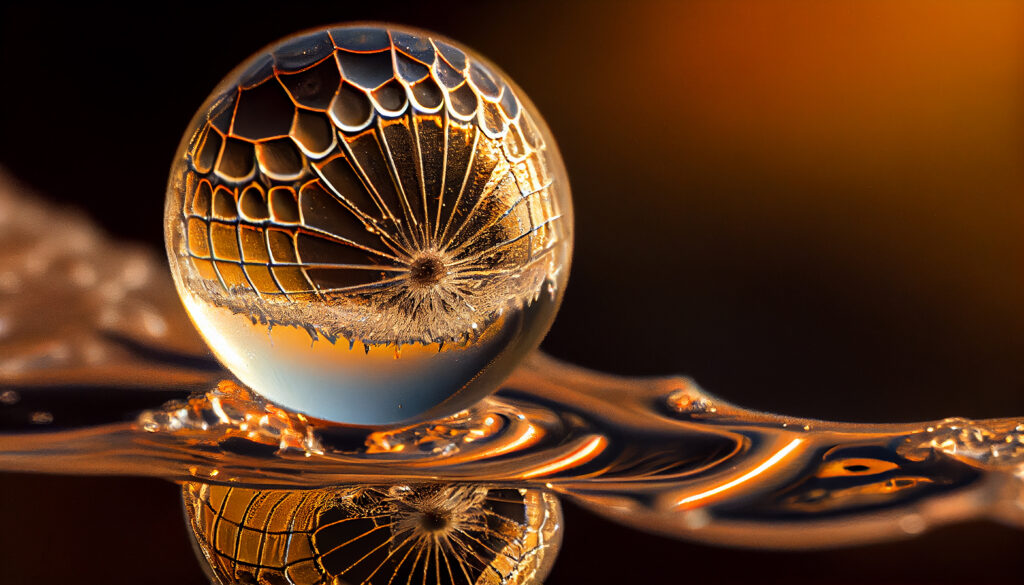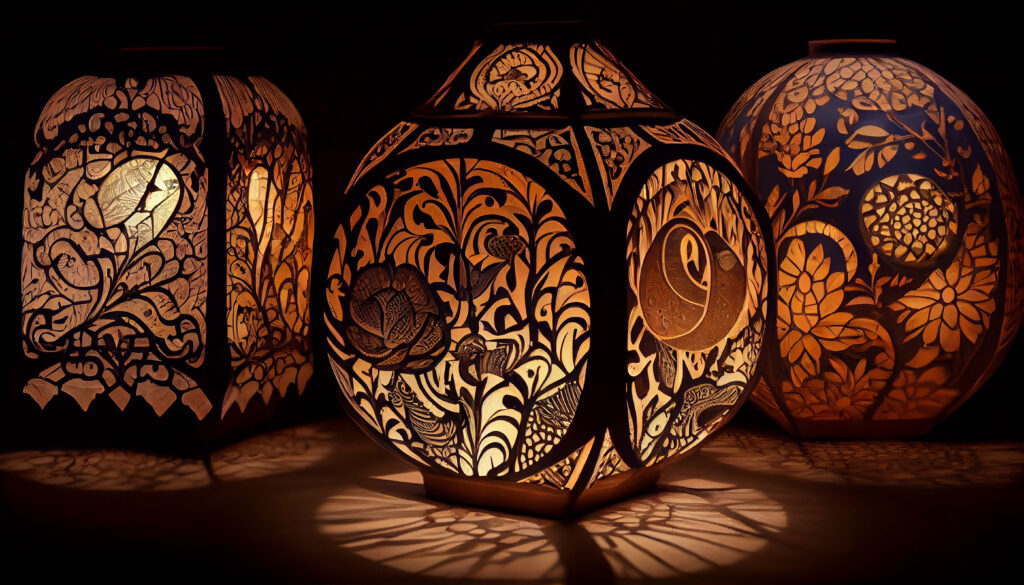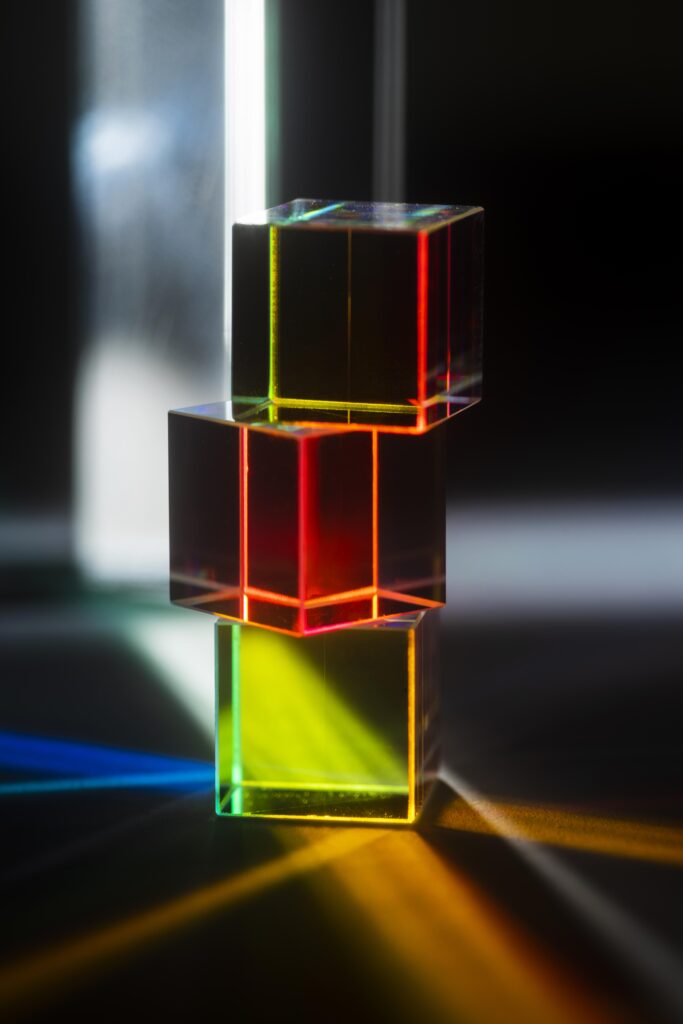Glass art, a mesmerizing form of artistic expression, has witnessed a remarkable evolution over the centuries. From its ancient origins to the present day, the fusion of technology and tradition has given rise to a new era in glass art. In this blog post, we delve into the captivating world of glass art, exploring its historical roots, technological advancements, contemporary trends, and the intersection of tradition and innovation.

Table of Contents
I. Introduction
A. Definition of Glass Art
Glass art encompasses a broad spectrum of creative endeavors involving the manipulation of glass into aesthetically pleasing forms. This includes various techniques such as glassblowing, stained glass, and fused glass.
B. The Fusion of Technology and Tradition in Glass Art
The convergence of age-old techniques with cutting-edge technology has revolutionized the way artists approach glass art. This fusion opens new possibilities for creativity, pushing the boundaries of what can be achieved with this versatile material.
II. Historical Evolution of Glass Art
A. Origins of Glass Art
The origins of glass art can be traced back to ancient civilizations such as Mesopotamia and Egypt, where rudimentary glass objects were crafted. These early creations laid the foundation for the rich tapestry of glass art we appreciate today.
B. Major Milestones in Glass Art History
Throughout history, various civilizations contributed to the development of glass art. From the Roman Empire’s intricate glass mosaics to the Venetian glassblowing tradition, each era added unique elements to the art form.
C. Traditional Techniques and Their Significance
Traditional glass art techniques, such as kiln-formed glass and lampworking, continue to play a vital role in preserving the authenticity of the craft. These time-honored methods are celebrated for their cultural significance.
III. Technological Advancements in Glass Art
A. Introduction to Modern Glass Technologies
The 21st century has witnessed a surge in technological innovations that have reshaped the landscape of glass art. From 3D printing to augmented reality, artists now have access to tools that amplify their creative capabilities.
B. Impact of Technology on Creativity and Design
Technology empowers artists to experiment with unconventional forms and materials, pushing the boundaries of traditional glass art. The integration of digital design tools allows for intricate detailing and precision in execution.
C. Examples of Innovative Glass Art Pieces
Notable artists are embracing technology to create awe-inspiring glass art pieces. From interactive installations that respond to human interaction to sculptures incorporating LED lighting, these creations redefine the possibilities of glass as a medium.

IV. Contemporary Artists and Their Influences
A. Profiles of Renowned Glass Artists
In this section, we showcase the profiles of contemporary glass artists who have made a significant impact on the art scene. Their unique styles and contributions highlight the diversity within the field.
B. How Technology Has Influenced Their Work
Interviews with featured artists reveal insights into how technology has become an integral part of their creative process. The synergy between artistic intuition and technological tools is evident in their innovative works.
C. Blending Tradition with Contemporary Concepts
Despite technological advancements, many artists maintain a deep connection to traditional techniques. This section explores how artists skillfully blend the old with the new, creating pieces that resonate with both history and modernity.
V. Popular Glass Art Trends
A. Emerging Trends in Glass Art
As the art world evolves, so do the trends within glass art. This section explores the latest styles and techniques gaining popularity, from sustainable glass art to experimental forms that challenge conventional norms.
B. The Influence of Social Media on Trends
The interconnectedness of the digital age has significantly impacted the visibility and spread of glass art trends. Social media platforms serve as dynamic spaces for artists to share their work, influencing global trends and sparking creativity.
C. How Artists Adapt to Changing Tastes
Adaptability is key in the ever-changing landscape of art. Successful artists understand the pulse of their audience, allowing them to adapt their styles to align with evolving tastes while staying true to their artistic vision.
VI. Challenges in Modern Glass Art
A. Balancing Tradition and Innovation
While technological advancements bring exciting possibilities, artists face the challenge of striking a balance between traditional techniques and embracing new technologies. Maintaining authenticity while pushing creative boundaries is an ongoing struggle.
B. Environmental Concerns in Glass Production
The environmental impact of glass production has become a concern within the art community. Artists are exploring sustainable practices and eco-friendly materials to mitigate their ecological footprint.
C. Economic Challenges for Glass Artists
Earning a livelihood as a glass artist presents its own set of challenges. This section explores the economic realities artists face, from pricing their work to navigating the market and establishing a sustainable career.
VII. Future Prospects of Glass Art
A. Predictions for the Future of Glass Art
What does the future hold for glass art? Predictions range from further integration with technology to a resurgence of interest in traditional craftsmanship. This section delves into the possibilities that lie ahead.
B. Role of Technology in Shaping the Future
Technological advancements continue to shape the trajectory of glass art. From smart glass to innovations in sustainable practices, the role of technology in defining the future of glass art is examined in detail.
C. Opportunities for Aspiring Glass Artists
Despite challenges, the future holds numerous opportunities for aspiring artists. This section provides insights into emerging avenues, grants, and support networks that can help budding glass artists thrive.
VIII. Glass Art Galleries and Exhibitions
A. Overview of Prominent Glass Art Galleries
Explore renowned galleries dedicated to showcasing exceptional glass art. From local spaces to international institutions, these venues play a crucial role in promoting and preserving the art form.
B. Notable Glass Art Exhibitions
A roundup of must-visit glass art exhibitions offers readers a chance to experience the diversity of the medium. From traditional displays to immersive installations, these exhibitions showcase the best in contemporary glass art.
IX. The Role of Glass Art in Interior Design
A. Incorporating Glass Art into Interiors
Glass art isn’t confined to galleries; it has found a place in interior design. This section explores creative ways to incorporate glass art into residential and commercial spaces, adding a touch of sophistication.
B. Popular Glass Art Applications in Design
From bespoke glass sculptures to functional glass elements, interior designers are increasingly turning to glass art to enhance their projects. This part highlights popular applications and their impact on design aesthetics.
C. Creating a Statement with Glass Art
Glass art has the power to transform spaces and make a bold statement. Learn how designers leverage the versatility of glass to create focal points that captivate and elevate the overall design of a space.

X. DIY Glass Art Projects
A. Simple Glass Art Projects for Beginners
For readers eager to try their hand at glass art, this section offers easy-to-follow DIY projects. Discover the joy of creating personalized glass art pieces without the need for extensive equipment.
B. Tools and Materials Needed
A comprehensive guide to the tools and materials required for DIY glass art projects ensures that enthusiasts are well-equipped to embark on their creative journey.
C. Step-by-Step Instructions
Detailed step-by-step instructions accompany each DIY project, empowering readers to experiment with various techniques and create their unique glass art.
XI. Interview with a Glass Art Expert
A. Insights from an Experienced Glass Artist
Gain valuable insights into the world of glass art through an interview with a seasoned expert. Discover their perspectives on the industry, the evolution of techniques, and the future of glass as an artistic medium.
B. Their Perspective on Technology in Glass Art
Delve deeper into the expert’s thoughts on the symbiotic relationship between traditional craftsmanship and modern technology. Uncover how these elements coalesce to push the boundaries of creativity.
XII. Personal Experiences with Glass Art
A. Blogger’s Personal Encounters with Glass Art
The blogger shares personal anecdotes, revealing their journey of discovery and appreciation for glass art. These experiences add a human touch to the narrative, connecting readers on a personal level.
B. Impact of Glass Art on the Blogger’s Life
Explore how the blogger’s encounters with glass art have influenced their perspectives, creativity, and even daily life. This section provides a relatable connection between the reader and the captivating world of glass art.
XIII. Social Media’s Role in Popularizing Glass Art
A. Platforms for Sharing and Discovering Glass Art
Social media platforms serve as vibrant communities for artists and enthusiasts alike. This section explores the platforms where glass artists showcase their work and where enthusiasts discover new and exciting pieces.
B. Influencers in the Glass Art Community
Identify key influencers who have played a pivotal role in shaping the discourse around glass art. From artists to curators, these individuals contribute to the ever-growing popularity of the medium.
C. Hashtags and Trends Associated with Glass Art
An exploration of the trending hashtags and online challenges within the glass art community sheds light on the dynamic nature of social media’s influence on the visibility and recognition of artists.
XIV. Addressing Misconceptions about Glass Art
A. Common Myths about Glass Art
Dispelling common myths and misconceptions surrounding glass art provides clarity to readers. Addressing preconceived notions opens the door to a deeper appreciation of the skill and innovation behind the craft.
B. Clarifying Misconceptions
Each misconception is countered with factual information, ensuring that readers walk away with a more accurate understanding of the intricacies involved in creating glass art.
XV. Conclusion
A. Summarizing the Fusion of Technology and Tradition in Glass Art
In conclusion, the blog post reflects on the intricate dance between technology and tradition within the realm of glass art. Emphasize the importance of this fusion in shaping the vibrant and diverse landscape of contemporary glass art.
B. Encouraging Readers to Explore and Appreciate Glass Art
The final words encourage readers to explore the enchanting world of glass art, visit galleries, and support local artists. A call to action prompts readers to share their newfound appreciation for this timeless yet ever-evolving medium.
FAQs About Glass Art
Q1: How is glass art created, and what are the primary techniques used?
Glass art creation involves various techniques, each requiring skill and precision. The traditional method of glassblowing entails shaping molten glass using a blowpipe. Other techniques include kiln-formed glass, where pieces are shaped through heat and gravity, and lampworking, which uses a torch to manipulate glass rods. Fused glass involves melting layers of glass in a kiln, allowing for intricate designs. These techniques, among others, showcase the diversity of glass art creation.
Q2: Can anyone try their hand at DIY glass art projects, or is it a skill reserved for professionals?
DIY glass art projects cater to both beginners and enthusiasts. Many projects are designed for individuals with no prior experience, providing step-by-step instructions and using easily accessible tools and materials. While professional-level skills may be needed for complex pieces, the joy of creating personalized glass art is accessible to anyone willing to explore and experiment.
Q3: What role does sustainability play in modern glass art, considering the environmental concerns associated with glass production?
Modern glass artists are increasingly conscious of environmental impact. Sustainable practices include recycling glass, using eco-friendly materials, and adopting energy-efficient processes. Some artists repurpose discarded glass, contributing to the circular economy. Sustainability not only addresses environmental concerns but also aligns with the growing demand for eco-conscious art.
Q4: How has technology influenced the pricing and marketability of glass art pieces?
Technology has revolutionized the marketing of glass art. Online platforms and social media expose artists to a global audience, impacting pricing and marketability. Artists can showcase and sell their work directly to collectors, reducing the reliance on traditional galleries. Technology has democratized access, allowing emerging artists to gain recognition and influence the pricing dynamics of the market.
Q5: Are there any upcoming glass art exhibitions that enthusiasts should look out for?
Stay updated on upcoming glass art exhibitions by following major art event calendars and announcements from renowned galleries. Institutions such as the Corning Museum of Glass often host exhibitions featuring both established and emerging artists. Online platforms also offer virtual exhibitions, providing accessible opportunities for enthusiasts worldwide to explore the latest in the world of glass art.
These detailed answers aim to provide comprehensive information, offering insights into the creation process, accessibility of glass art projects, sustainability practices, the influence of technology on pricing, and avenues for enthusiasts to engage with upcoming exhibitions.
